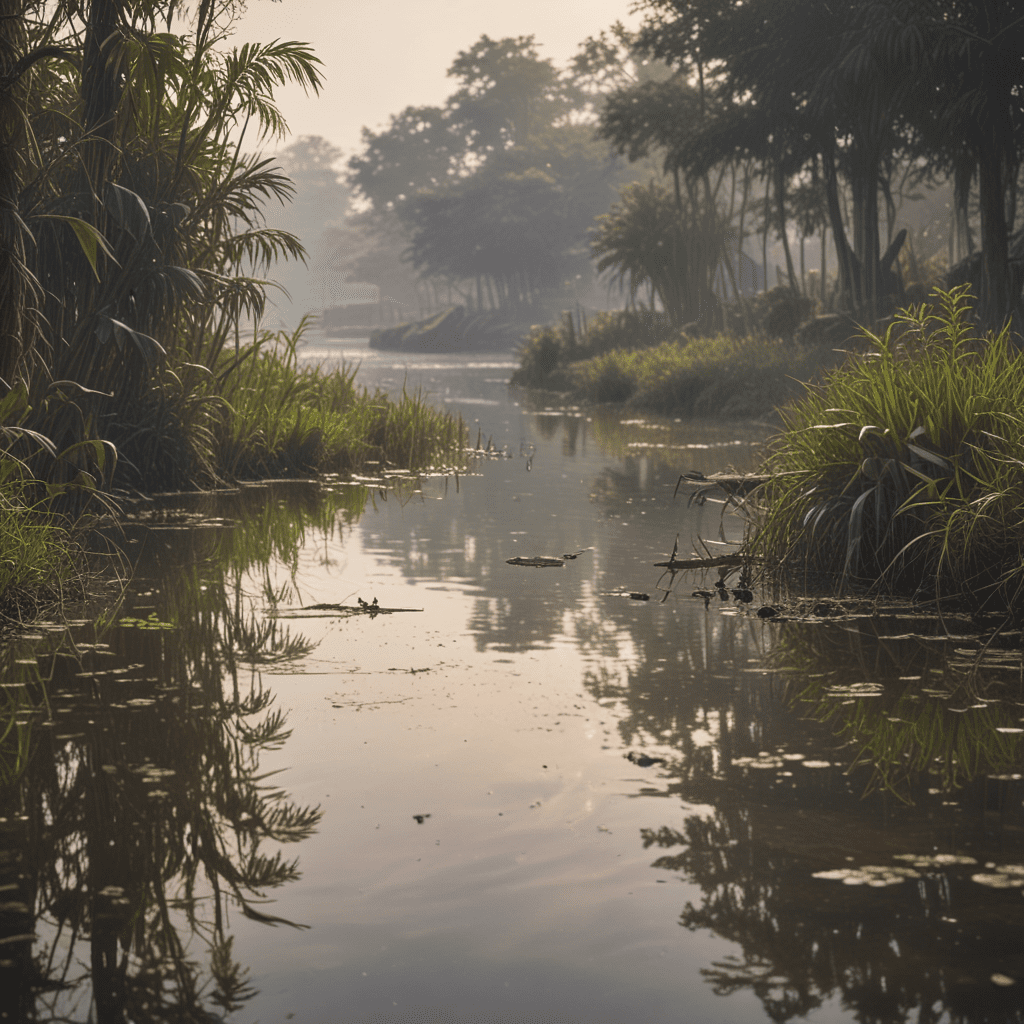
Exploring the Wetlands of Bangladesh
Introduction
Embark on a journey through the enchanting wetlands of Bangladesh, a tapestry of verdant ecosystems teeming with biodiversity. These wetlands, encompassing vast areas of the Sundarbans mangrove forests, coastal marshes, and inland freshwater systems, play a crucial role in the ecological balance and socioeconomic well-being of the region.
Geographic Extent and Biodiversity
The wetlands of Bangladesh stretch along the country's vast coastline, extending inland toward the majestic Himalayas. This diverse landscape supports an array of habitats, including tidal forests, freshwater swamps, and seasonally inundated floodplains. The wetlands harbor an incredible array of flora and fauna, including numerous endangered and endemic species.
Hydrological Processes and Water Flows
The wetlands of Bangladesh are shaped by complex hydrological processes influenced by tidal fluctuations, seasonal rainfall, and riverine flow. These systems serve as natural water reservoirs, absorbing excess water during monsoons and releasing it gradually during dry periods. The intricate interplay of water flows sustains the delicate ecological balance of the wetlands.
Ecological Importance and Ecosystem Services
The wetlands of Bangladesh provide invaluable ecosystem services, including water filtration, carbon sequestration, and nutrient cycling. These ecosystems support a wide range of aquatic species and serve as important breeding and nursery grounds for fish, crustaceans, and other marine life. The wetlands also play a vital role in flood control and erosion protection, safeguarding coastal communities from natural disasters.
Socioeconomic Significance for Local Communities
The wetlands of Bangladesh are closely intertwined with the livelihoods and cultural practices of local communities. These ecosystems provide a source of food, income, and traditional medicines. Fishing, shrimp farming, and rice cultivation are major economic activities in the region. Moreover, the wetlands serve as important grazing grounds for livestock, and their reeds and thatch are used for building materials and handicrafts.
Impacts of Climate Change and Coastal Erosion
The wetlands of Bangladesh are highly vulnerable to the impacts of climate change, particularly sea-level rise and coastal erosion. Rising sea levels threaten to inundate coastal areas, while erosion undermines critical ecosystems and infrastructure. Climate change is also altering rainfall patterns, leading to more intense floods and droughts. These factors pose significant challenges for the communities and ecosystems that depend on the wetlands.
Conservation and Management Initiatives
Recognizing the vital importance of the wetlands, the government of Bangladesh and various organizations are implementing conservation and management initiatives. These efforts focus on protecting and restoring critical habitats, reducing pollution, and promoting sustainable practices among local communities. Mangrove reforestation and community-based conservation programs play a key role in safeguarding the ecological integrity of the wetlands.
Ecotourism and Sustainable Development
Ecotourism offers an opportunity to showcase the unique beauty and ecological significance of Bangladesh's wetlands while generating income for local communities. Well-managed ecotourism ventures can promote conservation awareness, support local livelihoods, and foster a sense of stewardship among visitors. Sustainable development practices that balance conservation with economic growth are crucial for ensuring the long-term health of the wetlands.
Conclusion: The Future of Bangladesh's Wetlands
The wetlands of Bangladesh are a treasure trove of biodiversity and a lifeline for local communities. As climate change and other challenges loom large, it is essential to prioritize the conservation and sustainable management of these ecosystems. Through collaborative efforts, research, and innovative solutions, we can safeguard the future of Bangladesh's wetlands and ensure their continued benefits for generations to come.
FAQ
Why are the wetlands of Bangladesh important?
The wetlands of Bangladesh provide vital ecosystem services, support biodiversity, and sustain local communities.
What are the major threats facing the wetlands of Bangladesh?
Climate change, sea-level rise, coastal erosion, and pollution are key threats to the wetlands of Bangladesh.
How are the wetlands of Bangladesh being conserved?
Conservation efforts include mangrove reforestation, community-based conservation programs, and sustainable development practices.
What is the significance of ecotourism for the wetlands of Bangladesh?
Ecotourism can promote conservation awareness, generate income for local communities, and support sustainable development in the wetlands of Bangladesh.


